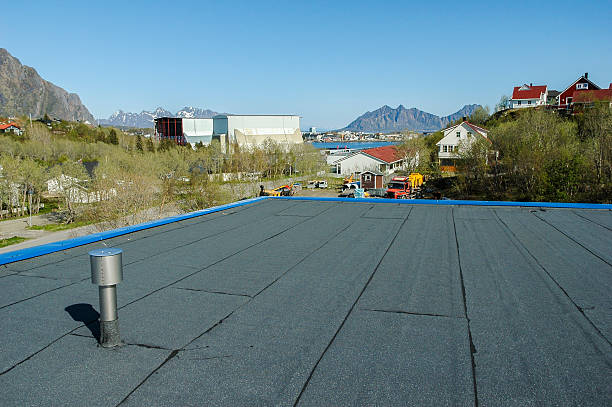
Flat roof construction is super popular for both modern homes and commercial buildings because of the techniques and materials used, such as rubber applied over a tar and gravel base, especially in urban areas like Boston. They give you extra usable space and a clean look — but they also come with some unique challenges. If you’ve got a flat roof, you’ve probably run into issues like pooling water or the occasional leak. The good news is that most problems are totally fixable if you catch them early. Here’s a rundown of the most common flat roof issues and how you can keep your roof in great shape.
Flat roofs aren’t actually 100% flat — they’re built with a slight slope to help water drain. But if that slope isn’t working well or the roof starts sagging, you’ll end up with standing water, also known as ponding water. Over time, this can weaken the roof, cause leaks, and even lead to structural damage.
Leaks are probably the most common flat roof issue. They can happen from small cracks, poor installation, or just wear and tear over time. Once water gets under the roofing material, it can lead to mold, rot, and other nasty damage.
Ever notice bubbles or blisters forming on your flat roof membranes? That happens when air or moisture gets trapped under the roofing material. Left alone, these can weaken the roof and lead to tears or cracks.
Flat roofs go through a lot of temperature changes, which causes the materials to expand and contract. Over time, that stress can lead to cracks and splits in the roof’s surface.
If your flat roof wasn’t installed properly in the first place, you’re going to have problems — poor sealing, weak seams, and bad drainage are common signs of a sloppy job. Hiring a qualified roofing contractor is crucial to avoid these issues.
Single-ply flat roofing materials like EPDM (a type of rubber) can shrink over time, putting stress on the seams and causing leaks.
Flat roofs tend to hold onto moisture longer than sloped roofs, which makes them the perfect spot for moss, algae, and even weeds. This can weaken the roof surface and clog up your drains.
Constant sun exposure can lead to roof damage by baking the roofing material, making it brittle and prone to cracking. Heat can also cause the material to expand and contract, leading to stress over time.
Flashing (the material that seals joints and edges) is critical for keeping water out. Regular flat roof maintenance is essential for keeping flashing in good condition. If it starts to loosen or crack, you’ll likely end up with leaks.
Most flat roofs experience structural movement over time as buildings naturally settle, which can cause the roof to shift or crack. This movement puts stress on the roofing material and can create gaps or leaks.
Flat roofing systems are stylish and practical, but they need regular care to stay in good condition. The key to avoiding big repairs is catching problems early — that means regular inspections and quick fixes when needed. Whether you’re dealing with a small leak or some bubbling in the material, addressing the issue right away will save you money and headaches down the road. Keep up with maintenance, and your flat roof will last for years to come!